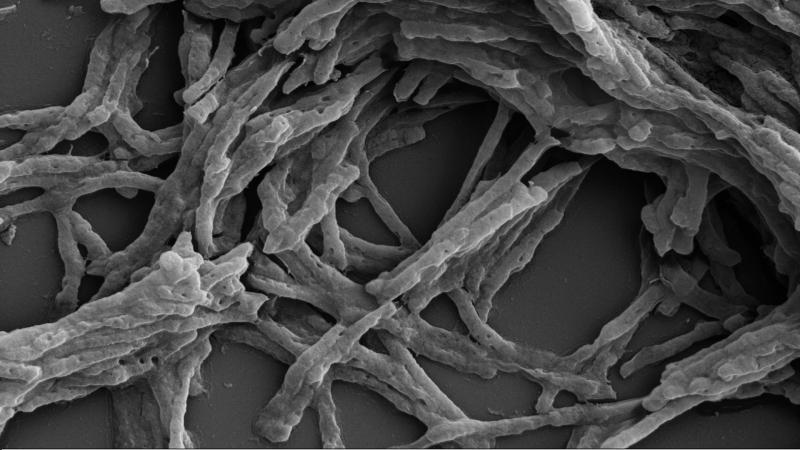
Our genetic material is a big molecule of DNA or deoxyribonucleic acid, whose structure is a double-stranded wound-up helix. It contains specific instructions that run a living cell, and these instructions are written on the strands. When cells divide, the DNA replicates too. In this process, the contents of the strands are read and copied carefully by unwinding the strands. But that's not as simple!
As anyone who has untangled twisted strands knows, trying to unwind two interwoven strands, whose ends are fixed, will only produce more torsion and subsequent stress elsewhere in the strands. Cells use enzymes to untangle the strands, creating some tension and torsion in the DNA molecule. But there is a built-in tension reliever in the form of another enzyme called topoisomerases. These enzymes can reduce the stress by either cutting one or both strands, throwing one strand around the other and resealing it back.
In a recent study, researchers from the Indian Institute of Science (IISc) and Jawaharlal Nehru Centre for Advanced Scientific Research (JNCASR), Bengaluru, have explored the working of topoisomerases in the DNA of the bacteria Mycobacterium smegmatis. This bacteria is a close relative of the tuberculosis-causing bacteria Mycobacterium tuberculosis. The study found the versatile functioning of these enzymes in this bacteria as compared to those in E. coli, a widely studied bacteria. It also underscores the connection of these enzymes to essential molecular functions like transcription and chromosome segregation. The results of the study were published in the journal Nucleic Acid Research and was partially funded by the Department of Biotechnology.
E.coli contains a variety of specialized topoisomerases that perform different functions during the reading and copying of DNA. In contrast, M. smegmatis contains only two. Fascinated, the researchers of the current study tried to find out how just two enzymes could do a variety of functions needed for manipulating the DNA. They used two altered variants of the topoisomerase enzyme, which could bind the DNA but could not complete the process of cutting. These modified variants were obtained either by genetic manipulation or using chemical inhibitors.
The study found that both altered enzymes were binding all over the genome, but cutting it only at a few sites. Among such sites were the one where DNA replication—the process where the DNA is copied into another molecule—originates. Working with artificial DNA sequences, the researchers deciphered that the sites preferred by the enzyme to bind had to be free of other proteins.
DNA transcription is a process where the two strands are unwound and copied into an RNA molecule by an enzyme called RNA polymerase. The study found that the topoisomerase enzyme was found to be associated with genes actively transcribed by RNA polymerase—a logical observation since the unwinding of the DNA produces torsion, which is alleviated by these enzymes.
During this process, sometimes, the RNA polymerase pauses at a short distance from where it has started transcribing, instead of rushing through the copying process. It is moved when a phosphate molecule attaches to the enzyme, which spurs the polymerase into active transcription. The researchers also observed that topoisomerase in M.tuberculosis is activated and triggered into action by the same event. A single switch thus fires both enzymes simultaneously into action. If this is the case, then topoisomerase should be found on genes that are actively transcribed more often than others. Indeed, the researchers found that transcriptionally active genes showed more topoisomerase activity. Drugs that inhibited transcription also inhibited topoisomerase activity.
Since DNA in bacteria is a closed ring, copying it into another ring leaves the two circles entangled with each other. Like a magician who untangles the two interlinked rings, topoisomerase enzymes cut the molecules, pass one through the other, and separate them. Supporting this fact, the researchers found a high incidence of topoisomerase enzymes at entangled regions. These findings resulted from mapping the binding sites and patterns of topoisomerase on the complete genome of Mycobacterium smegmatis.
The findings show how topoisomerase activity is closely connected to critical molecular processes like transcription and decatenation. By alleviating torsion on the DNA caused during replication and transcription, these enzymes help in the normal functioning of a cell. The approaches used to map topoisomerase activity can be applied to understand the role of these enzymes in other organisms, say the researchers.






